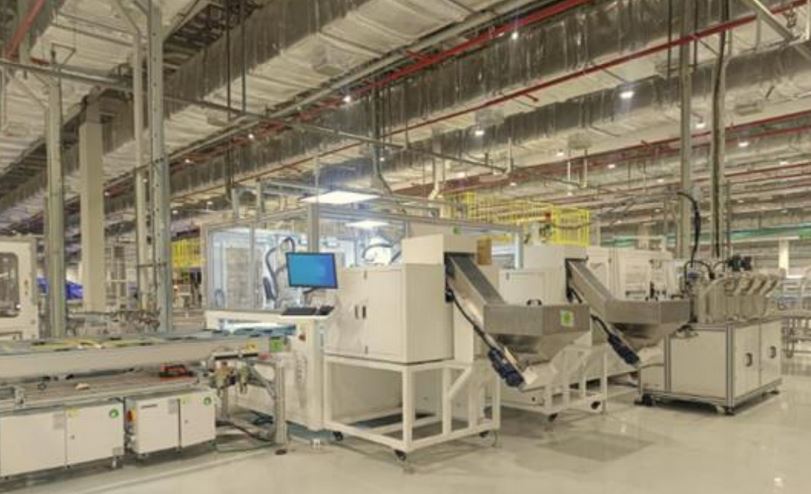
Reliance Industries has begun production at the first phase of its planned 10 GW solar module facility. The fully automated line manufactures heterojunction (HJT) panels with outputs of up to 720 W.
From pv magazine India
Reliance Industries has started production on its first gigawatt-scale solar module line. The fully automated line produces HJT panels with up to 720 W of output. The company said its panels are already certified by the Bureau of Indian Standards (BIS).
The facility is designed for a capacity of 10 GW per year, with a modular setup that allows for quick expansion to 20 GW as needed. It will be fully vertically integrated, with production spanning from polysilicon to panel, including ingot, wafer, cell, panel, glass, and polyolefin elastomer (POE).
“Overall, in each [stage] on the entire solar chain, the engineering is complete, the long lead items and procurements are complete and construction is going on in full swing,” said Reliance Industries at a recent analyst meeting.
Due to vertical integration, large-scale manufacturing, and cutting-edge production technology, the modules produced at this factory will be more cost-effective and appealing than imported alternatives, said the company.
Reliance Industries is also developing 30 GW of battery manufacturing capacity, with production spanning cells, packs, and battery storage systems. It said solar panels produced at its Jamnagar factory will be transported to Kutch, where it has secured land for solar project development. Work on the solar farm, including a dedicated transmission line from Jamnagar, has already begun, with international and local contractors preparing the land.
In addition, Reliance Industries building a 2,000-acre green hydrogen ecosystem in Kandla, India, where it will produce electrolyzers in partnership with Norway’s Nel ASA. Green hydrogen production will be powered by its own solar generation and battery energy storage.
This content is protected by copyright and may not be reused. If you want to cooperate with us and would like to reuse some of our content, please contact: editors@pv-magazine.com.
Source link


